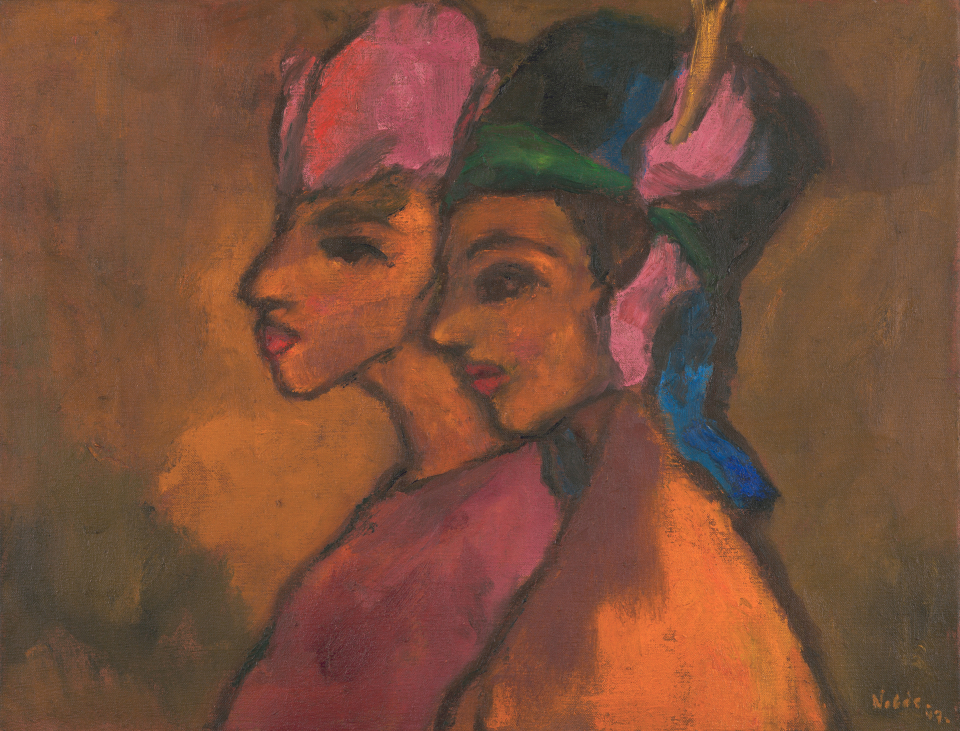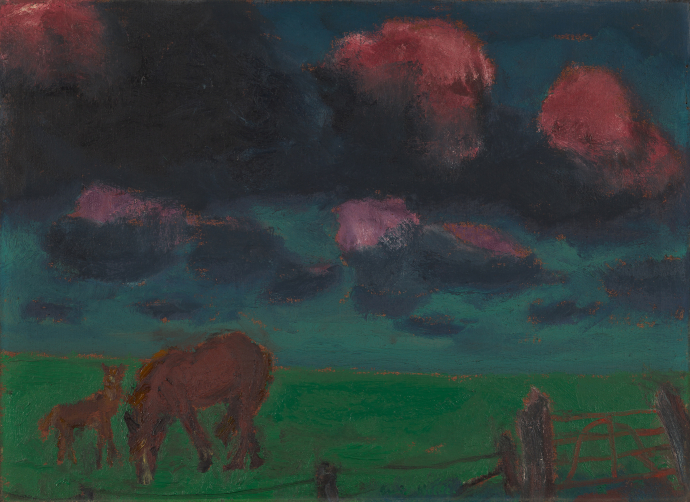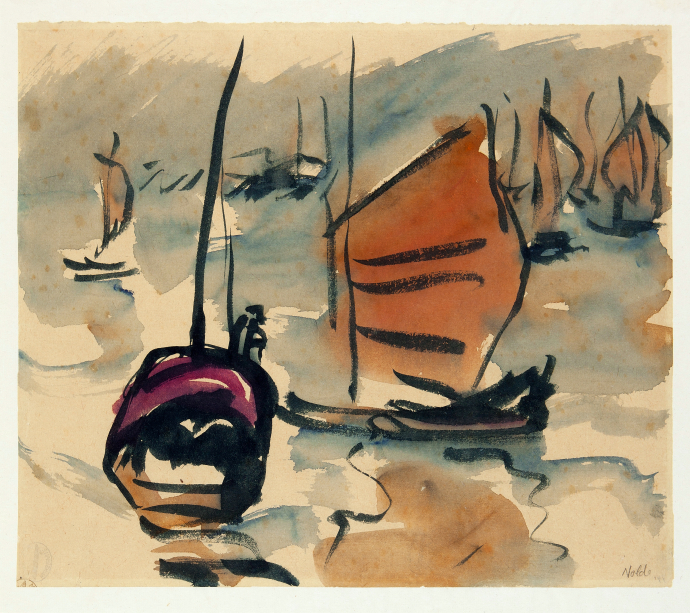Hector-Bau > Ebene 2 > Schaudepot
Intro
More than the simplified forms of their faces, it is the bright colors of their clothing that Nolde employs to characterize the two female figures. Although the artist depicts both figures in profile, standing shoulder to shoulder, the scene’s spatial situation remains vague. Broad black lines frame the women’s faces, while the color of their skin barely differs from the brown tones of their surroundings. This lends the colors of their dresses an even greater intensity.
The title reflects the scene’s exoticism, which has a real history. Emil Nolde, who like many Expressionist artists was interested in the art of African and Asian cultures, undertook a journey to the South Seas between 1913 and 1914. Decades later the impressions from this journey come to life again, cloaked—as they are here—in an expressive play of color.
Background
Emil Nolde depicts two female figures in profile, executed in bright colors and with a reduced black outline. As indicated by the painting’s title, the location of the scene remains indeterminate. Nolde undertook a journey to the South Seas between 1913 and 1914 where, like many other representatives of Expressionist painting, he found a source of inspiration in non-European cultures in his search for heightened imagery, primitive authenticity and an expressive use of color. However, is the depiction of the two unknown women meant as a portrait of individuals or a stylization of, for the artist, “remote” and supposedly “foreign”?
Nolde’s role and identity as an artist raises precisely such questions. The fact that numerous of his works where not just confiscated during the Nazi period but were prominently displayed in the propaganda exhibitions of so-called “degenerate art”, appears virtually irreconcilable with his membership of the NSDAP. Up until the end of the war the artist held anti-Semitic views closely aligned with Nazi ideology. In the history of Western art Nolde is considered an important pioneer of Expressionist painting. Consequently, the question of whether the artist and his works can be considered separately must be continually re-examined.
Kunsthalle Mannheim
Transkription
A young woman wearing a red blouse and an eccentric pink headdress is standing behind another young woman who is wearing an unusual black hat with green hatband, blue neck guard, and pink finery. Both busts are framed by a broad, greyish-block contour. With this, painter Emil Nolde separates the profile of the woman in the back from the yellow-orange background. Within the depths of the painting, he hints at a natural environment by using planar shades of grey and green. The painting is characterized by clear, simple shapes. Its coloring is expressive, with little realism.
The motif of two girl busts refers to one of the „nonpainted paintings“ which Nolde created from 1941 on. The painter and printmaker, who was born in 1867 as Hans Emil Hansen in Schleswig-Holstein province, had been disenfranchised by the Nazis, step by step. They expelled him from the Prussian Academy of Arts which had appointed him as member in 1931. 48 of his paintings were shown in 1937 in the „Degenerate Art“ exhibition,1102 of his works had been confiscated from German museums. Nolde nevertheless remained a staunch Nazi in the 1930ies, even informing authorities on Max Pechstein, a Jew, and becoming a member of the National Socialist Working Committee of Northern Schleswig in 1934. He was unable, however, to prevent his ostracism with his many petitions. In August 1941, the Reichs Chamber of Visual Arts banned him from selling any more paintings.
Nolde continued painting small watercolor drafts for later oil paintings such as the one we are looking at. This is how he describes it in his biography where, after the war, he carefully deleted all anti-Semitic statements. „Girls From Afar “ refers to non-European cultures and probably is a memory of the New Guinea expedition the artist undertook in 1913–1914.




